I love to find ways to incorporate sensory learning into everyday children's play and this simple salt paint activity is not only budget friendly but a whole lot of fun too!
So what did we use to make the paintings have a raised and bumpy texture?
SALT PAINT!
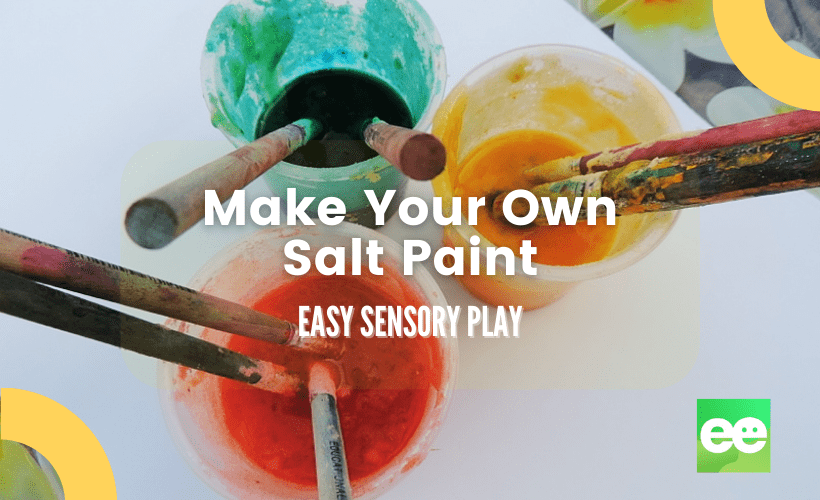
We are doing a lot of activities with salt lately as the twins Daddy brought home a damaged bag from his work and it is the biggest bag of salt I have ever seen! So of course I'm not going to let it go to waste when there is fun to be had.
Most educators and parents have a stash of cooking salt because we often make our own playdough and it is a key ingredient but next time you have the salt out why not try making some of your own salt paint to share with the children. You don't need much and the learning possibilities are well worth it.
I made up a few pots of cell mix paste which I recently used in our sensory sago balls activity too. If you don't have cell mix you can use the paint you usually use – all will work except water paint. The pots you can see below just have some edicol colour dyes added to them as cell mix makes a clear paste.
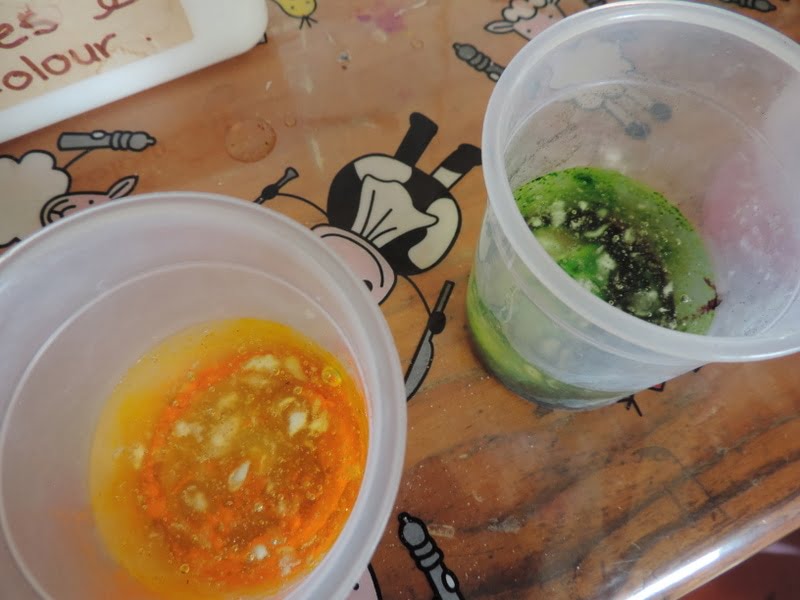
How to make the Salt Paint
When you have your paint colours of your choice ready add your salt. I added half a cup to the pots you see here. Pass them over to the children to stir the salt through and use the opportunity to start a conversation…obviously the questions you ask will depend on the ages of children in your care.
- Why is the salt disappearing?
- What does dissolving mean?
- Has the paint changed colour?
- What can you see in the paint now?
- Is the paint smooth or bumpy?
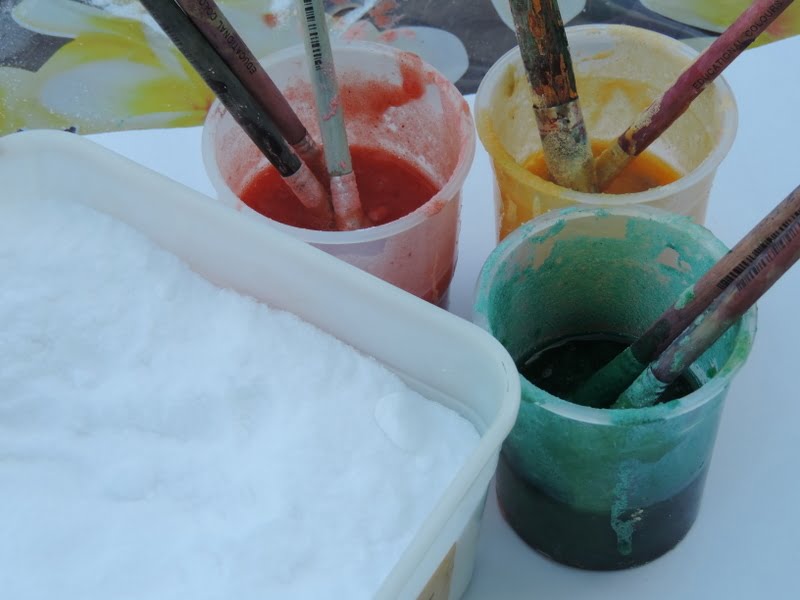
I used some recycled white cardboard we had for the children to paint on. I do suggest using a heavy paper or preferably some cardboard (raid that recycle bin!)as the salt makes the paintings quite heavy when dry and they will easily rip or fall apart if you just use normal thin paper. Let the children create, explore and investigate!
- What colours can you see?
- Can you see the crystals?
- What happens if you sprinkle some salt over the top?
- How is it different to the usual paint?
- What do you think will happen when it dries?
- How does it feel it you paint some on your hands?
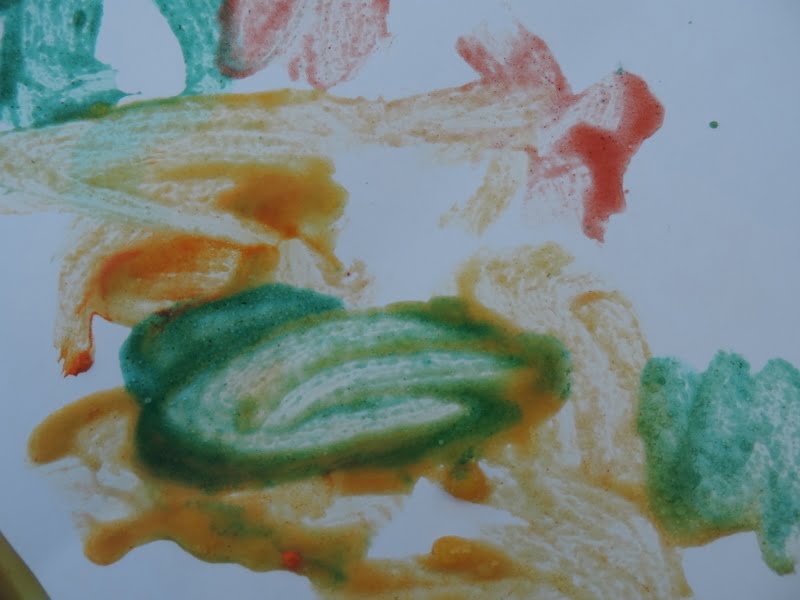

When the paintings dry the fun really begins! They are best left in the sun for an afternoon or day to ensure they become really dry and hard. If they become damp the salt will begin to dissolve again.
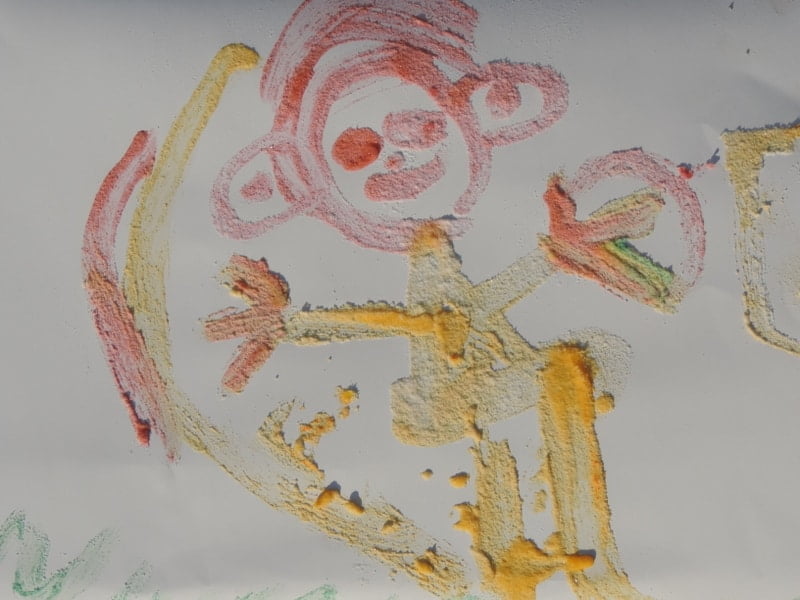
Encourage the children to run their hands over their painting and tell you what they feel….they are usually amazed at how bumpy and interactive their picture has become!
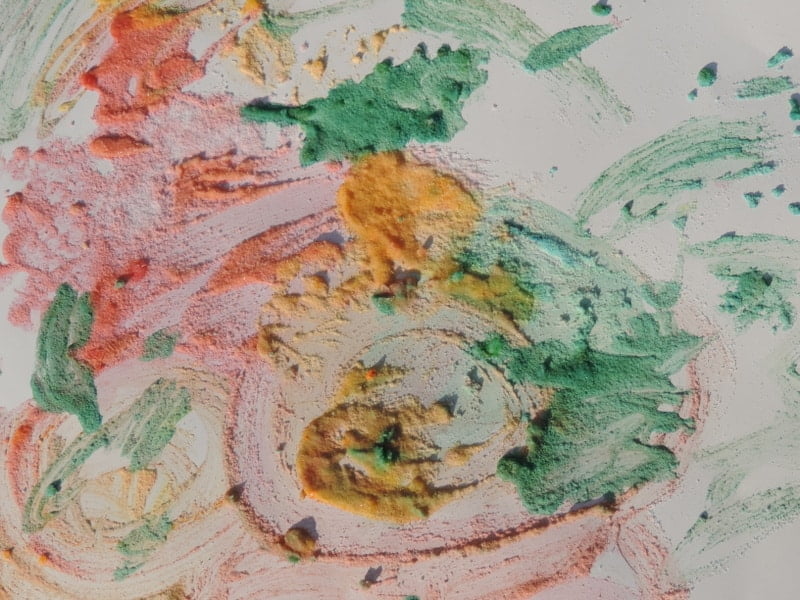
Older children will enjoy trying to ‘write' the letters of their name and when dry they can then trace over them with a finger to extend the sensory process.
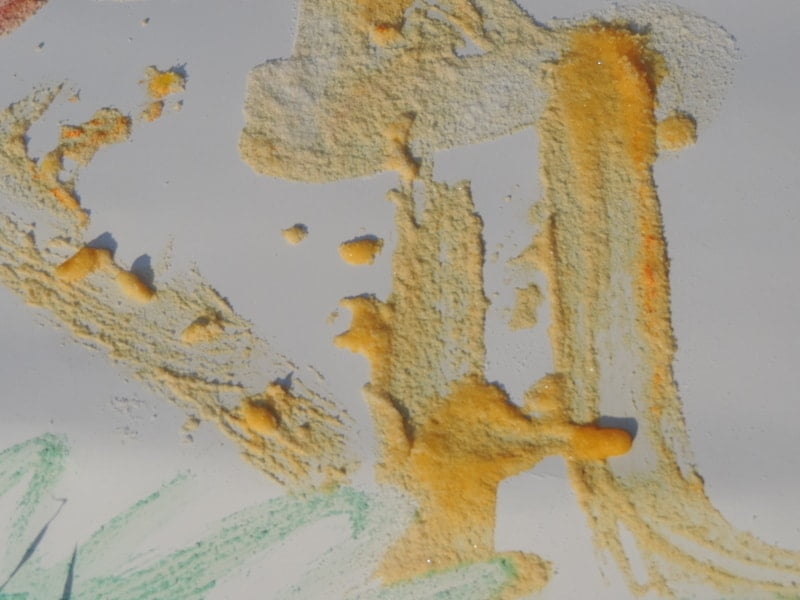
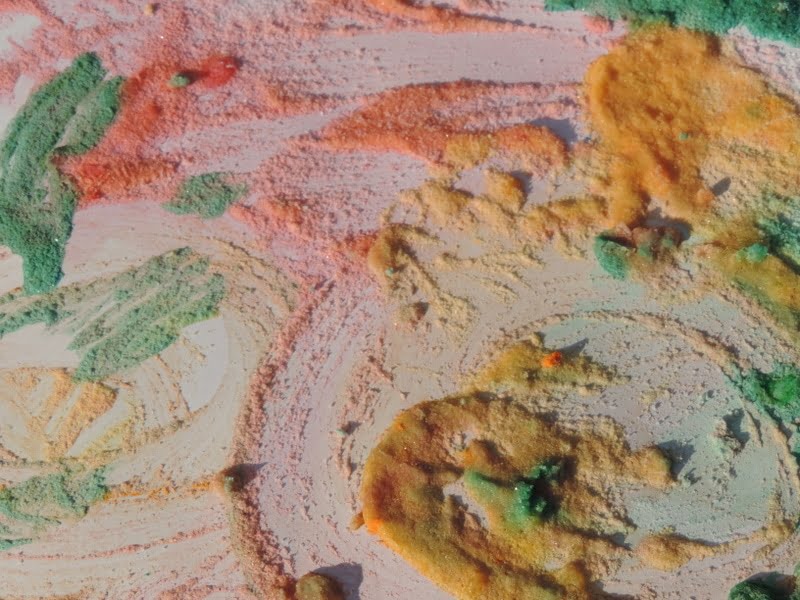
If you use cell mix or acrylic paint it will keep for quite a long time but you will need to wash the brushes thoroughly as the bristles will go quite hard with the salt.
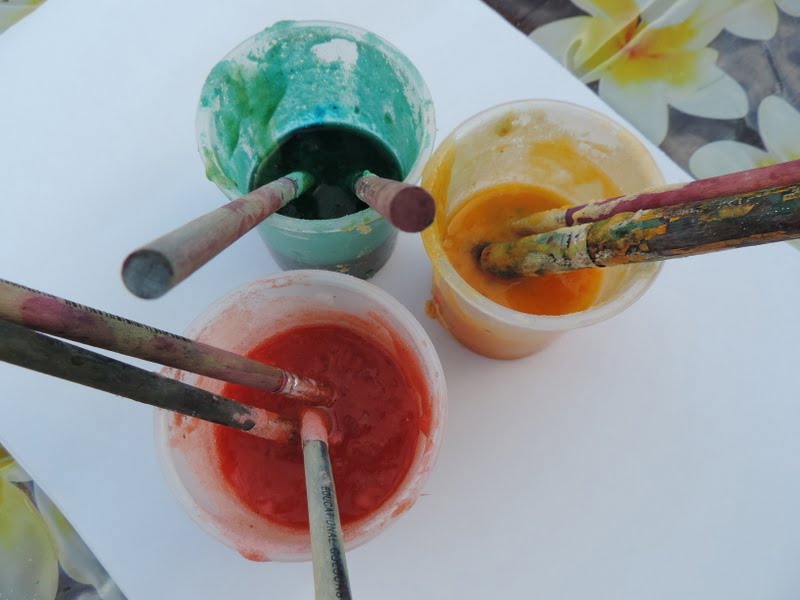
Why not give some salt paint a try today – I love making my own paints and the children enjoy being part of the process from beginning to end product too!
On Pinterest? Pin the image below to refer back to later when you are looking for this play recipe again!

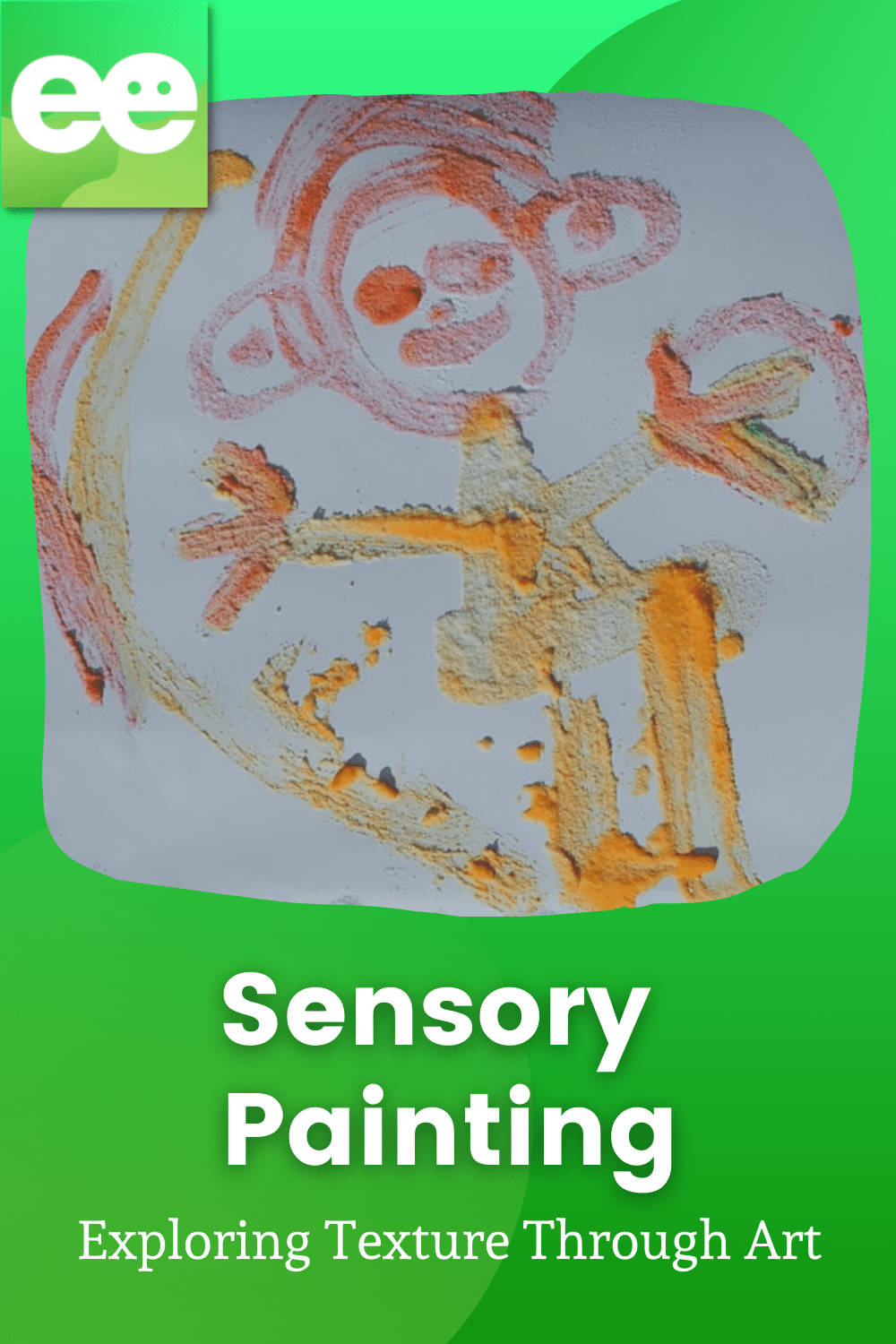
A Little About Me

Jodie Clarke is an early childhood professional supporting educators who want and need to stay passionate about the work they do! She has 30 years hands-on experience in the early childhood and human services sectors across many different roles.
Jodie is mum to 3 in Australia and has already helped thousands of educators with their work through her popular blog posts, activity ideas, online training and e-books.

It’s a great way to get the kids to enjoy & have a beautiful conversation